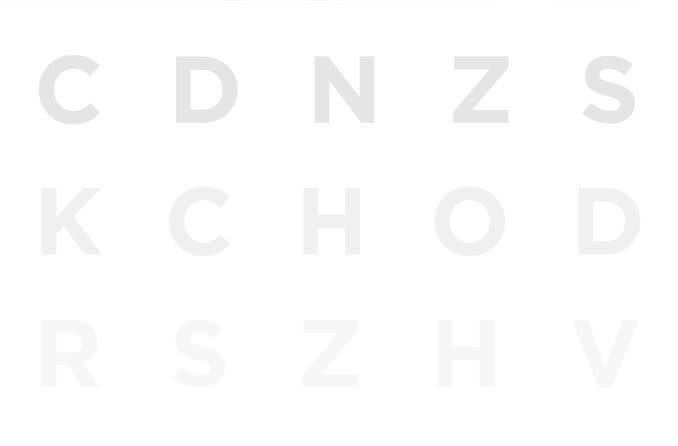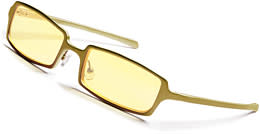Contrast sensitivity testing

What is a contrast sensitivity test?
A contrast sensitivity test measures your ability to distinguish between finer and finer increments of light versus dark (contrast). This differs from common visual acuity testing in a routine eye test, which measures your ability to recognise smaller and smaller letters on a standard eye chart.
Contrast sensitivity is a very important measure of visual function, especially in situations of low light, fog or glare, when the contrast between objects and their background is often reduced. Driving at night is an example of an activity that, for safety, requires good contrast sensitivity .
Even if you have 6/6 visual acuity (also described as 20/20 in the US), you can have eye or health conditions that may diminish your contrast sensitivity and make you feel that you are not seeing well.
Symptoms of reduced contrast sensitivity
If you have low contrast sensitivity, you may have problems with night driving, including difficulty seeing pedestrians walking alongside poorly lit streets. Or you might notice that your eyes tire more easily while reading or watching television.

A person with normal visual acuity but poor contrast sensitivity might see the trees in the foreground clearly (high contrast), but have trouble seeing the contours of the mountains against the sky in the background (low contrast).
Poor contrast sensitivity also can increase your risk of a fall if you fail to see that you need to step down from a curb onto similarly coloured pavement.
Low contrast sensitivity can be a symptom of certain eye conditions or diseases such as cataracts, glaucoma or diabetic retinopathy.
Changes in contrast sensitivity also can occur after LASIK, PRK and other types of refractive surgery.
For example, sometimes a person who has LASIK may be able to see 6/6 after the procedure but complains of poor night vision. This could be caused by a loss of contrast sensitivity from the surgery.
Conversely, some people achieve better contrast sensitivity and night vision after LASIK, compared with their vision with glasses or contact lenses before the procedure.
In most cases, people with cataracts notice a significant improvement in both visual acuity and contrast sensitivity after cataract surgery.
How contrast sensitivity testing is done
Contrast sensitivity testing often isn't included in a routine eye test. Your optometrist might perform the test because of a specific visual complaint you have or because he or she suspects you have a condition that is affecting your ability to discern contrast.

The Pelli Robson contrast sensitivity chart tests your ability to detect letters that are gradually less contrasted with the white background as your eyes move down the chart.
Probably the most widely used device to test contrast sensitivity is the Pelli Robson contrast sensitivity chart.
Like a standard Snellen visual acuity chart, the Pelli Robson chart consists of horizontal lines of capital letters but instead of the letters getting smaller on each successive line, it is the contrast of the letters (relative to the chart background) that decreases with each line.
Other, more sophisticated devices also may be used to test your contrast sensitivity. These devices often use targets called sine-wave gratings that consist of a number of fuzzy, parallel bars of light and dark. These bars can vary in width (spatial frequency) as well as contrast from target to target, to give a more thorough evaluation of how sensitive your eyes are to differences in contrast.
Some sine-wave grating tests include a bright light source that can be directed toward your eyes during the test to simulate glare situations such as oncoming headlights during night-driving.
If your optometrist determines that you need a contrast sensitivity test, it likely will be administered after a standard visual acuity test and before your pupils are dilated.
The testing typically is done while you wear your glasses or contact lenses if you require vision correction.
For evaluation of eye disease, contrast sensitivity usually is tested on each eye individually.
For other reasons, such as sports vision testing or to evaluate vision after contact lens fitting, LASIK or cataract surgery, the testing might be done with both eyes open.
What is the contrast sensitivity function (CSF)?
Detailed contrast sensitivity measurements that include both size (spatial frequency) and contrast are used to plot a person's contrast sensitivity function (CSF).
Sine-wave grating targets with thicker bars represent low spatial frequencies; targets with thinner bars represent higher spatial frequencies. In this regard, determining a person's CSF is much like evaluating the sensitivity of his or her hearing, which involves using tones of low and high pitch as well as variations in volume.
Your contrast sensitivity function essentially is a plotting of the curve that defines the lowest contrast level that you can detect for each spatial frequency tested.
Generally, objects with high spatial frequencies (sine-wave gratings with very thin bars) must have significantly higher contrast than objects with lower spatial frequencies (gratings with medium-width bars) to be detected by the human visual system.
What can be done about poor contrast sensitivity?
Your contrast sensitivity test results can help your optometrist determine if you have vision errors known as higher-order aberrations or some other problem that could be corrected with special eye-wear or eye surgery.

Eyewear with specially tinted lenses can improve contrast. Shown here is the Anime style with yellow lenses, by Gunnar Optiks.
If you are diagnosed with low contrast sensitivity, your optometrist might advise you to wear corrective lenses with a yellow filter to improve your ability to discern contrast.
If you need prescription spectacles, many people find that they see better in low-light conditions when wearing lenses that include anti-reflection coating, compared with wearing the same prescription lenses without AR coating.
Also, spectacles with custom wavefront lenses sometimes can improve contrast sensitivity and night vision.
In some cases, custom or wavefront LASIK can reduce higher-order aberrations and improve contrast sensitivity.
Certain premium intraocular lenses (IOLs) that have been designed with wavefront technology also can reduce higher-order aberrations and improve contrast sensitivity after cataract surgery.
Page published on Tuesday, 17 March 2020






